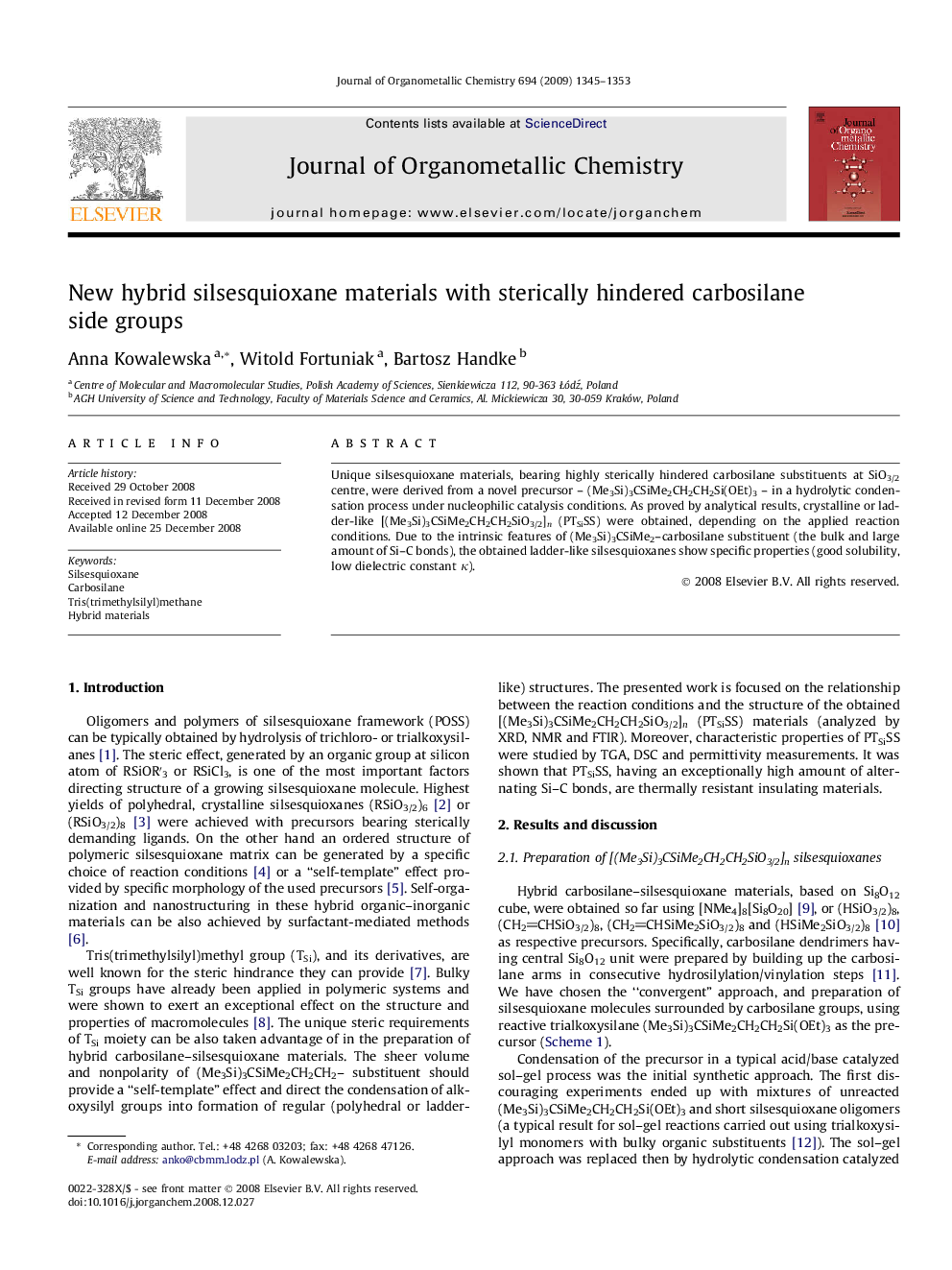| Article ID | Journal | Published Year | Pages | File Type |
|---|---|---|---|---|
| 1325251 | Journal of Organometallic Chemistry | 2009 | 9 Pages |
Unique silsesquioxane materials, bearing highly sterically hindered carbosilane substituents at SiO3/2 centre, were derived from a novel precursor – (Me3Si)3CSiMe2CH2CH2Si(OEt)3 – in a hydrolytic condensation process under nucleophilic catalysis conditions. As proved by analytical results, crystalline or ladder-like [(Me3Si)3CSiMe2CH2CH2SiO3/2]n (PTSiSS) were obtained, depending on the applied reaction conditions. Due to the intrinsic features of (Me3Si)3CSiMe2–carbosilane substituent (the bulk and large amount of Si–C bonds), the obtained ladder-like silsesquioxanes show specific properties (good solubility, low dielectric constant κ).
Graphical abstractNew hybrid silsesquioxane–carbosilane materials [(Me3Si)3CSiMe2CH2CH2SiO3/2]n were obtained using a precursor bearing highly sterically hindered carbosilane substituent. Bulky, nonpolar (Me3Si)3CSiMe2CH2CH2– groups provide self-templating effect to the formed species due to the specific steric requirements of carbosilane moiety. Depending on the applied reaction conditions crystalline or ladder-like [(Me3Si)3CSiMe2CH2CH2SiO3/2]n were generated.Figure optionsDownload full-size imageDownload as PowerPoint slide
